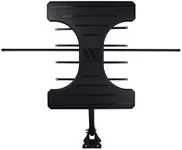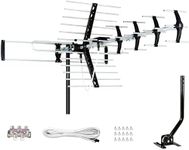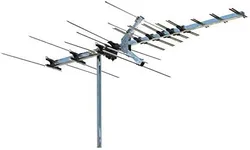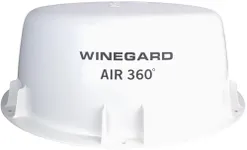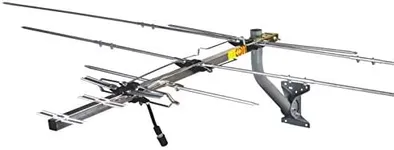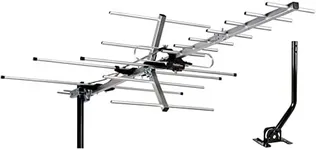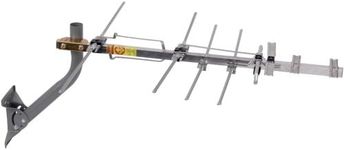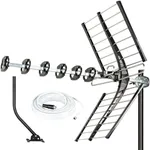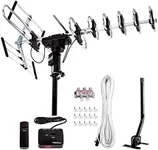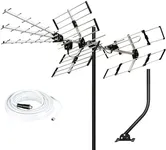Buying Guide for the Best Attic TV Antennas
Choosing the right attic TV antenna can significantly improve your television viewing experience by providing better reception and access to more channels. When selecting an attic TV antenna, it's important to consider several key specifications to ensure you get the best fit for your needs. Understanding these specifications will help you make an informed decision and enjoy clear, uninterrupted TV signals.RangeThe range of an attic TV antenna refers to the maximum distance it can effectively receive signals from broadcast towers. This spec is crucial because it determines how many channels you can access and the quality of the reception. Antennas with a range of up to 30 miles are suitable for urban areas with nearby broadcast towers. For suburban areas, a range of 30-60 miles is ideal, while rural areas may require antennas with a range of 60 miles or more. To pick the right range, consider the distance between your home and the nearest broadcast towers.
Frequency BandsTV antennas can receive signals on different frequency bands, primarily VHF (Very High Frequency) and UHF (Ultra High Frequency). VHF channels are typically channels 2-13, while UHF channels are 14-69. Some antennas are designed to receive both VHF and UHF signals, while others may only support one band. It's important to choose an antenna that supports the frequency bands used by the channels you want to watch. If you want access to a wide range of channels, a dual-band antenna that supports both VHF and UHF is a good choice.
Antenna TypeThere are different types of attic TV antennas, including directional, multi-directional, and omnidirectional antennas. Directional antennas focus on signals from one direction, providing a stronger signal from that direction but requiring precise aiming. Multi-directional antennas can receive signals from multiple directions, making them more versatile but potentially less powerful. Omnidirectional antennas receive signals from all directions, offering the most flexibility but generally having a shorter range. Choose the antenna type based on your location and the direction of the broadcast towers relative to your home.
GainGain is a measure of an antenna's ability to amplify the received signal, expressed in decibels (dB). Higher gain antennas can provide better reception, especially in areas with weak signals. Antennas with a gain of 5-10 dB are suitable for areas with strong signals, while those with a gain of 10-15 dB are better for areas with moderate signals. For areas with weak signals, look for antennas with a gain of 15 dB or higher. Consider the signal strength in your area to determine the appropriate gain for your antenna.
Size and InstallationThe size of the antenna can affect both its performance and ease of installation. Larger antennas generally have better reception capabilities but may be more challenging to install in an attic space. Smaller antennas are easier to install but may not provide the same level of performance. Consider the available space in your attic and your comfort level with installation when choosing the size of your antenna. Additionally, some antennas come with mounting hardware and installation guides, which can make the process easier.
AmplificationSome attic TV antennas come with built-in amplifiers to boost the signal strength, which can be particularly useful in areas with weak signals or long distances from broadcast towers. Amplified antennas can provide clearer reception and access to more channels. However, in areas with strong signals, amplification may not be necessary and could even cause signal overload. Determine whether you need an amplified antenna based on the signal strength in your area and the distance to the broadcast towers.

